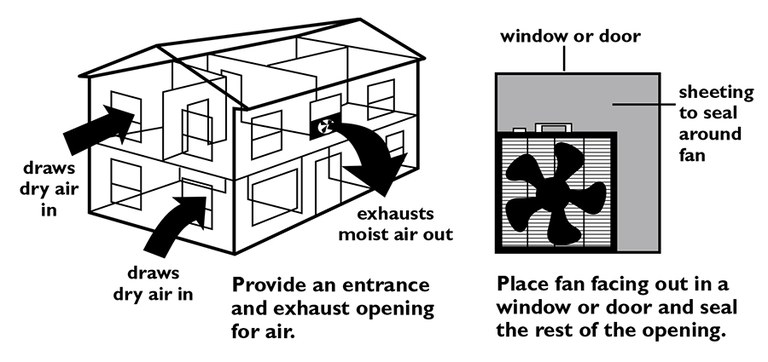Flood Recovery: Dry Out Before Rebuilding (DE1583, Reviewed May 2018)
Availability: Web only
The problem: Wood submerged in water will absorb a large amount of water. Rebuilding too quickly after a flood can cause continuing problems such as mold growth, insect infestations and deterioration of the wood and wall coverings.
How long until it’s dry? It may take weeks for the wood to be adequately dry to close a wall. The drying time will vary depending on the initial moisture content and the drying conditions.
How can I tell if it’s dry enough? Test it with a wood moisture meter. Wood should have a moisture content of less than 15 percent before drywall, paneling or other coverings are placed on the wood. Do-it-yourselfers may be able to borrow or rent a meter from a hardware store or lumberyard. Many county offices of the NDSU Extension Service have meters that can be checked out. If a contractor is doing the work, homeowners should have the contractor verify with a meter that the wood is dry.
How Can I Dry Things Out?
Ventilation. Ventilation is usually the best way to dry things out and can remove several gallons of water per day. Provide an entrance and exhaust opening for air to promote cross-ventilation. Place a fan in a window or door with the fan to the outdoors. Seal the rest of the opening with cardboard, plywood or blankets so the fan can create a vacuum. Use fans to circulate air over wet surfaces. Face fans into corners or other hidden areas.
Heat. Heat increases the moisture-holding ability of the air. Use your furnace or large heaters to heat the air. Small space heaters will have little effect. As wood gets drier it may be helpful to heat the house for a few hours then ventilate to exchange moist air with dry air.
Dehumidifiers. A dehumidifier can be used if outside air is humid. Dehumidifiers function most efficiently at warm temperatures. At 80 degrees and 60 percent relative humidity, most dehumidifiers will remove 1-2 pints of water per hour from the air.
The only accurate way to measure wood moisture content is with a wood moisture meter.


Reviewed May 2018

